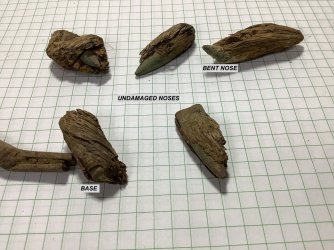I can see a machine gun melting a lead core under heavy use. I was part of a demonstration with an M60 getting hot enough to "run away" from steady firing. The barrel was hot enough to fire a round as the chamber closed without pulling the trigger. Breaking the chain or running out of ammo was the only way to stop firing. I just can't picture a bolt action hunting rifle melting the lead core. I could be wrong.
You are using an out of date browser. It may not display this or other websites correctly.
You should upgrade or use an alternative browser.
You should upgrade or use an alternative browser.
Molten Lead & Jacket Separation
- Thread starter DMM9623
- Start date
 Help Support Long Range Hunting Forum
Help Support Long Range Hunting Forum
epolentna, I appreciate your feedback. Here are a few more bits of information I can include to shed more light.
Under the trees and heavy foliage of these jungles is a heavy ground cover of both rotting and fresh fallen vegetation. Plants, leaves, rotting wood, etc... There is no exposed earth or sand. This battle occurred in April which is at the end of the hot/dry season. Even so, this layer of ground cover remains damp year around. This is due to the high humidity and 100% cover from sunlight. Any molten led would not have burned through to contact earth or sand.
I estimate that 98% of the recovered bullets were damaged from ricochet. The remaining 2% of undamaged bullets would have directly struck and were imbedded in trees or came to rest without contacting a tree or an object while in flight. I don't believe that the behaviors of a tumbling ricochet can be compared to a bullet striking a target backstop. The physics and dynamics of the two differ drastically.
I believe image 4 shows shapes of lead core that had been molten and re-hardened while still in flight or after coming to rest.
I'm seeing hundreds of smaller fragments of lead that I'm not picking up. There's just too much of it.
Many bullets were split at the cannelure providing an opportunity for lead to be ejected from each open end. Many others have multiple hits (a bent nose as well as damage to the center or base) where the bullet ricocheted off of an object and began tumbling and striking other objects. The centrifugal force of this hi-speed tumbling would have ejected molten lead from the open base.
Note that all of the historical accounts of the battle make mention the numerous tall hardwood trees. I assume these were responsible for the majority of ricochets. Foot note on the trees, I have a few bullets still embedded in preserved wood. I assume this was made possible by the preserving properties of the Cu based jacket. Note that these appear to be undamaged and have been verified to be Ball Rounds by magnet test. This raises another question on why these did not pancake or disintegrate. The trees must have been very soft. See photo.
The 30.06 cartridge (bullet) had three iterations, the M1906, M1 and M2. As the designs progressed, the period U.S. Army manuals on small arms ammo state concerns on both core and jacket stability. This was in the context of developing the best alloys to use to prevent melting cores or jacket separation.
Under the trees and heavy foliage of these jungles is a heavy ground cover of both rotting and fresh fallen vegetation. Plants, leaves, rotting wood, etc... There is no exposed earth or sand. This battle occurred in April which is at the end of the hot/dry season. Even so, this layer of ground cover remains damp year around. This is due to the high humidity and 100% cover from sunlight. Any molten led would not have burned through to contact earth or sand.
I estimate that 98% of the recovered bullets were damaged from ricochet. The remaining 2% of undamaged bullets would have directly struck and were imbedded in trees or came to rest without contacting a tree or an object while in flight. I don't believe that the behaviors of a tumbling ricochet can be compared to a bullet striking a target backstop. The physics and dynamics of the two differ drastically.
I believe image 4 shows shapes of lead core that had been molten and re-hardened while still in flight or after coming to rest.
I'm seeing hundreds of smaller fragments of lead that I'm not picking up. There's just too much of it.
Many bullets were split at the cannelure providing an opportunity for lead to be ejected from each open end. Many others have multiple hits (a bent nose as well as damage to the center or base) where the bullet ricocheted off of an object and began tumbling and striking other objects. The centrifugal force of this hi-speed tumbling would have ejected molten lead from the open base.
Note that all of the historical accounts of the battle make mention the numerous tall hardwood trees. I assume these were responsible for the majority of ricochets. Foot note on the trees, I have a few bullets still embedded in preserved wood. I assume this was made possible by the preserving properties of the Cu based jacket. Note that these appear to be undamaged and have been verified to be Ball Rounds by magnet test. This raises another question on why these did not pancake or disintegrate. The trees must have been very soft. See photo.
The 30.06 cartridge (bullet) had three iterations, the M1906, M1 and M2. As the designs progressed, the period U.S. Army manuals on small arms ammo state concerns on both core and jacket stability. This was in the context of developing the best alloys to use to prevent melting cores or jacket separation.
Attachments
Similar threads
- Replies
- 79
- Views
- 7K
